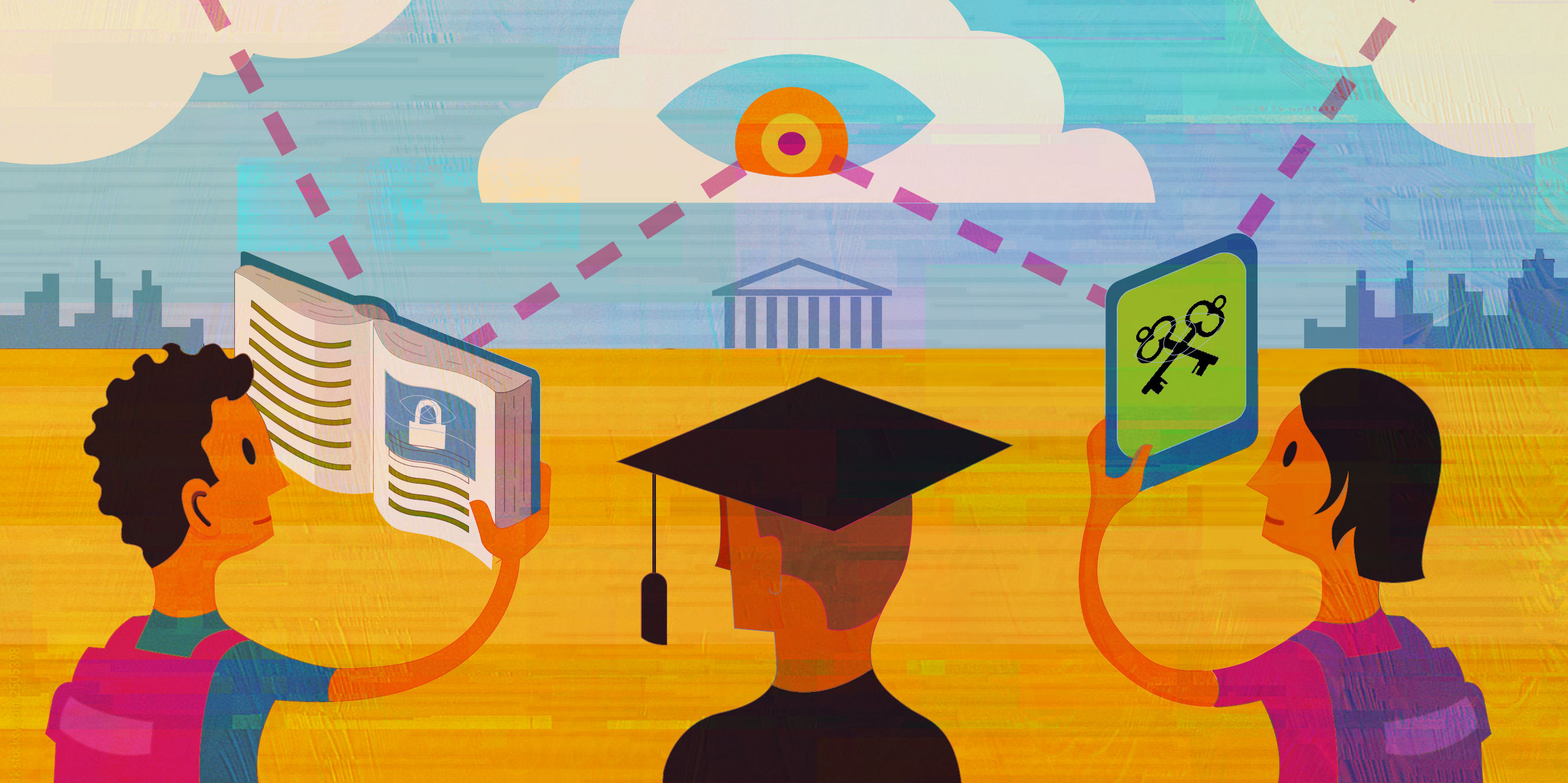Understanding and using technology is fundamental to education in the 21st century. As a result, many school districts around the country are making use of cloud-based educational platforms and assigning laptops and tablets to students.
Almost one third of all students—elementary through high school—already use school-issued digital devices, and many of these devices present a serious risk to student privacy. They collect far more information on kids than is necessary, store this information indefinitely, and sometimes even upload it to the cloud automatically. In short, they’re spying on students—and school districts, which often provide inadequate privacy policies (or no privacy policy at all), are helping them.
Now, EFF is spreading the word about companies collecting students’ data and launching a campaign to educate parents and administrators about these risks to student privacy. Children usually have little or no say about which devices they’re assigned, and we believe that the safety of their sensitive personal information should lie in the hands of parents and trusted school officials – not private companies. Learn more in our FAQ.
Read our report Spying on Students: School-Issued Devices and Student Privacy.
Case Studies
Student privacy is about more than data collection and legal protections; it is about real students and their families. What does it look like on the ground when edtech company policies and state and federal legislation interact with students and their data? EFF is interviewing stakeholders across the country to learn more about their experiences with student privacy.
Roseville City School District Embraces Chromebooks, But At What Cost?
Katherine W. was seven years old, in the third grade, when her teacher first issued Google Chromebooks to the class. When her father Jeff learned about the Chromebooks, he acted quickly and was able to negotiate with his daughter’s teacher so she could use a different computer and not have to use a Google account. But as third grade came to a close, Roseville City School District made clear that there would be no exception made the next year. Many people—including Jeff—assumed that the law would prevent Google from collecting data on his daughter for advertising purposes. But the truth is more complicated.
Fewer Resources, Fewer Choices: A School Administrator in Indiana Works to Protect Student Privacy
Eric M. is the Director of Technology at a public K-12 school district in a rural area of Indiana. The district is relatively small, with about 2100 students. School administrators like Eric are on the frontlines of student privacy battles, and those at rural schools fight those battles with fewer resources and choices. Looking at student privacy from a rural administrator’s perspective—especially one who specializes in technology—reveals the limitations schools face when they try to protect students online. It also points to how schools can empower students and families to choose how they use technology.
A School Librarian Caught in the Middle of Student Privacy Extremes
As a school librarian at a small K-12 district in Illinois, Angela K. is at the center of a battle of extremes in educational technology and student privacy. On one side, her district is careful and privacy-conscious when it comes to technology, with key administrators who take extreme caution with any potentially identifying information required to use online services. On the other side, the district has enough technology “cheerleaders” that now students as young as second grade are using Google’s G Suite for Education. School librarians like Angela are uniquely positioned to navigate a middle ground and advocate for privacy.
Privacy by Practice, Not Just By Policy: A System Administrator Advocating for Student Privacy
When Matt L. started to raise the alarm about educational technology in his school district, he knew it would ruffle some feathers. Matt has had a front-row seat to the increasing use of technology in his rural, public school district. At first, the district only issued Chromebooks to students in guest “kiosk” mode for test-taking. Over time, though, each of the district’s 10,000 students got individual access to school-issued devices. Matt and his sysadmin colleagues are at the center of deploying, configuring, and maintaining Google devices and software for the entire district, giving them opportunities to identify privacy problems with ed tech implementation and to propose solutions.
 Protect digital privacy and free expression. EFF's public interest legal work, activism, and software development preserve fundamental rights.
Protect digital privacy and free expression. EFF's public interest legal work, activism, and software development preserve fundamental rights.







